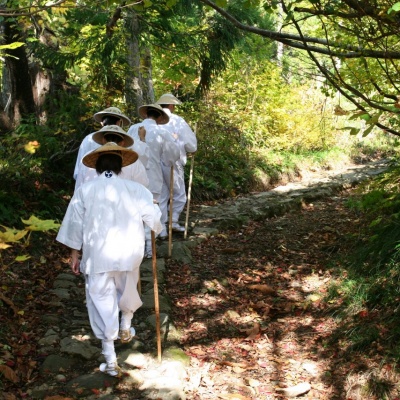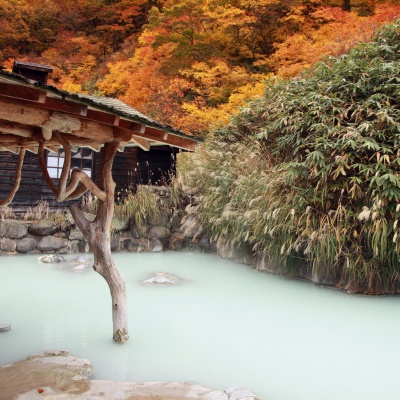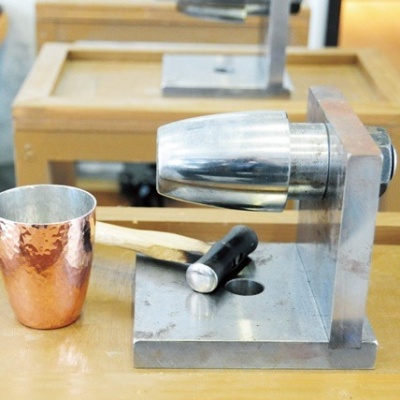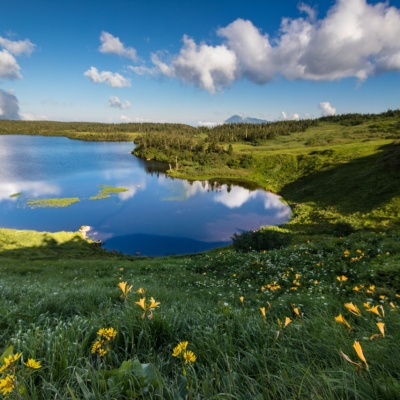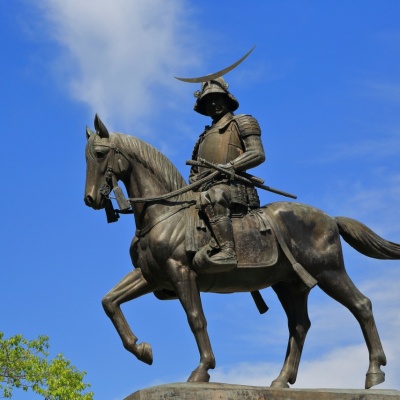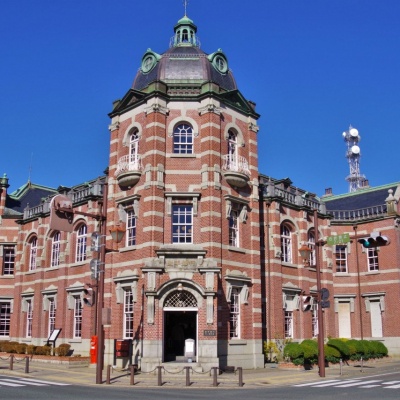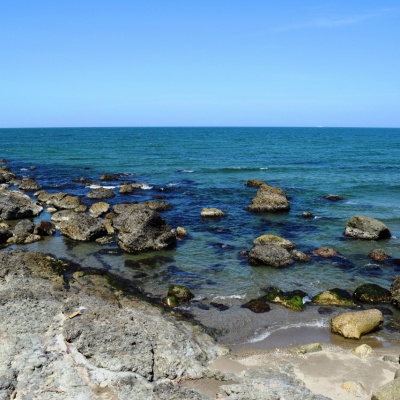Tohoku Sunsets and Scenic Coastal Drives
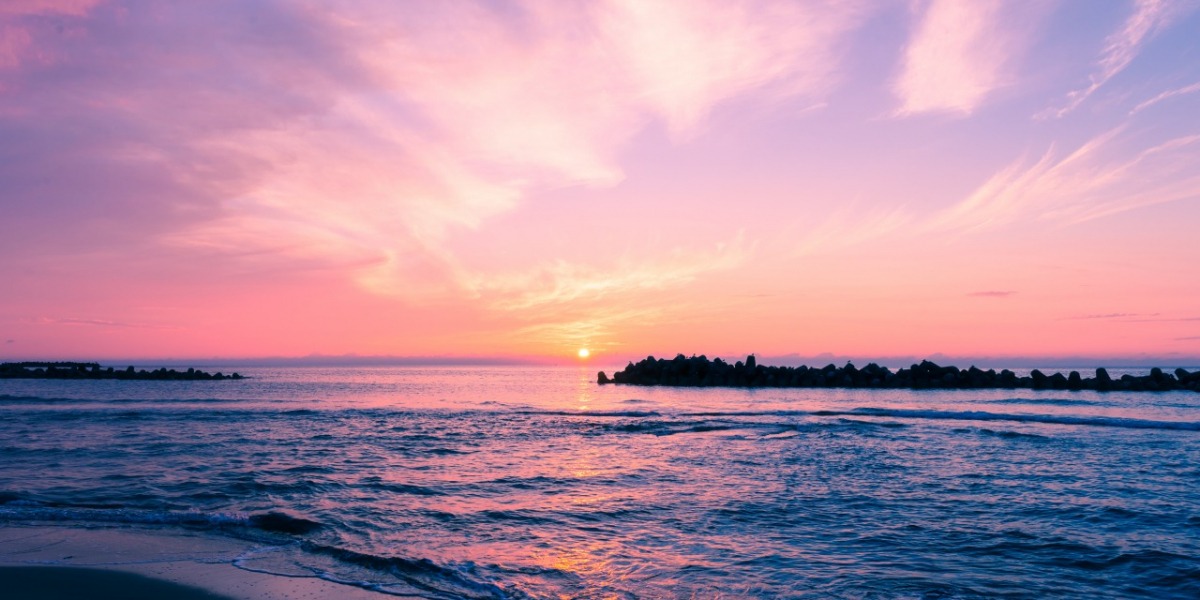
- Suggested Time : 3 days / 2 nights
- Transport Options : Drive
This route runs southward along the Sea of Japan from Akita to Niigata via Yamagata.
Take in magnificent views of the ocean below during the drive. Then, enjoy the luxury of soaking in hot springs while watching the sun set over the Sea of Japan.
(Akita - Sakata/Tsuruoka - Dewa Sanzan - Murakami - Niigata - Tsubamesanjo/Niigata)
START
Day1
Akita Station, Akita Airport
Akita City Folk Performing Arts Heritage Center (Neburi Nagashi Kan)
Experience a Kanto lantern the same size as the real thing!
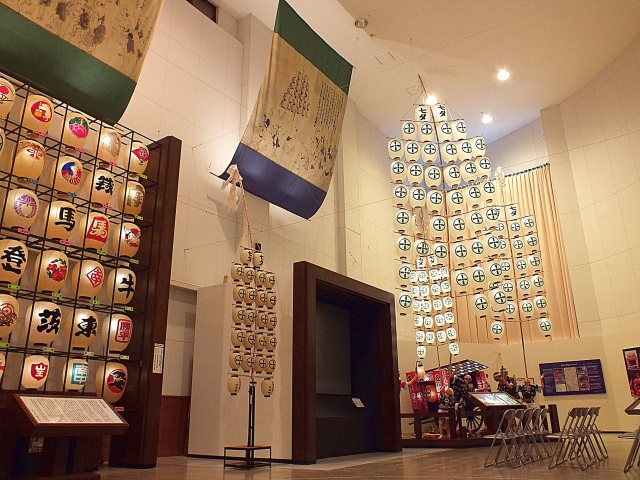
This facility introduces Akita City's traditional events and folk performing arts, such as Kanto and Akita Manzai, with materials and videos. The life-size Kanto lanterns lined up in the atrium exhibition hall are a spectacular sight.Visitors can actually hold the lanterns in their hands and experience the performance.
Kiritampo Hot Pot
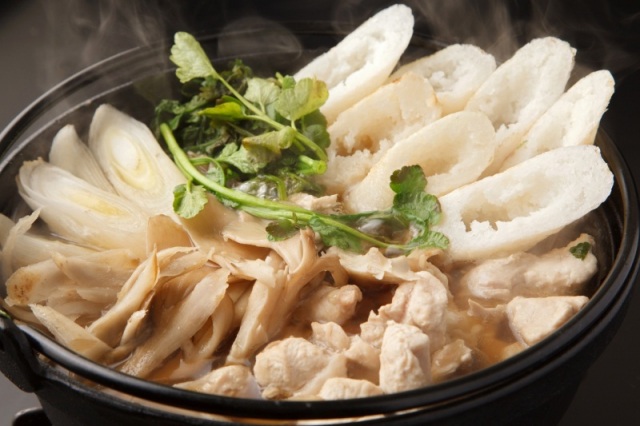
Kiritampo is a signature specialty of Akita consisting of mashed rice wrapped around a cedar skewer which is then grilled and cut into pieces to use in a variety of local dishes. Akita’s popular winter warmer is a hot pot with Kiritampo cooked in a rich broth of the popular local Hinaidori chicken, recognised as one of Japan’s three best breeds of chicken. Kiritampo soaked in the flavoursome soup is especially delicious thanks to its juicy and chewy texture absorbing the flavours of ingredients such as leek, Japanese parsley and Hinaidori chicken.
Chokai Blue Line (Yusa Town, Yamagata Prefecture)
A sightseeing mountain road that rises from 0 meters to 1,100 meters above sea level
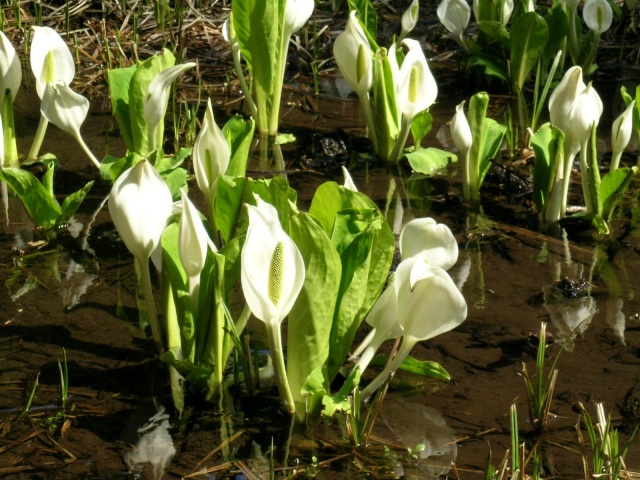
The Chokai Blue Line is a sightseeing mountain road that rises from 0 meters to 1,100 meters above sea level. It is a driving course (total length 34.9 km) that connects National Route 7 overlooking the Sea of Japan with Nikaho City, Akita Prefecture, and Yusa Town, Yamagata Prefecture, offering views of the blue waters of the Sea of Japan below, Tobishima and Sado Island in the distance, and the Oga Peninsula in the far distance. The Chokai Blue Line, a sightseeing mountain road that had been closed during the winter, opened to traffic in late April and will remain open until early November. After the opening, visitors can drive through the snow corridor until early May. In addition, since the line is partially opened early, skunk cabbage colonies can be seen from mid to late April.
Maiko Chaya Somaro Takehisa Yumeji Museum
Find yourself intoxicated with the performance of a charming maiko (dancing girls)
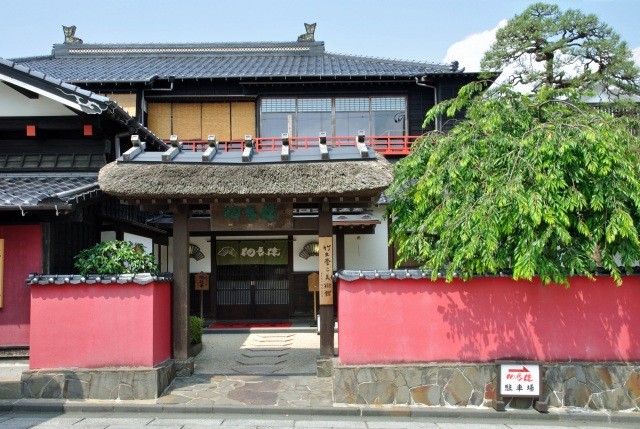
Somaro has been opened by renovating the famous Somaya restaurant that was in business since the days when kitamaebune (ships that sailed the Sea of Japan during the Edo period) came and went. You will come to an eye-catching vermillion wall and thatched roof when you climb up Maiko Slope laid with stone paving. The fan-shaped stone paving is elegant. The appearance will remind you of the times when this facility prospered as a restaurant. The inside is laid with a red carpet. There are fusuma (sliding doors) depicting ink paintings and pictures. There are also porcelain-made handles. You will find delicate craftsmanship throughout the building here. Some of the rooms also display works of Takehisa Yumeji who was famous for painting beautiful women. Why don't you immerse yourself in the world of Takehisa Yumeji rich in lyricism?
The reception hall on the second floor is a theater for Sakata maiko. You can watch dance performance every day from 2 p.m. The program contains three songs. These start with Sakata Jinku that tells the appearance of Sakata in those days when it bustled with kitamaebune. Please enjoy the performance of the charming maiko to your heart's content. You can take your photograph together with the maiko after the performance. Maiko Gozen is also popular. This allows you to enjoy lunch while watching the dancing of Sakata maiko. (You will need to make a reservation at least two days in advance.) You can also take a break while drinking matcha (powdered green tea) or coffee in the Maiko Cafe relaxation space on the first floor. If you are unable to watch a performance due to time constraints, order a drink here and take a commemorative photograph together with maiko.
There is a special exhibition of hina dolls carried on kitamaebune from March to early April every year. This exhibition displays hina dolls handed down through the generations with care in the state at the time when they were made. For example, they wear kimonos dyed with safflower and finely crafted hair ornaments. This is a magnificent sight.
A thematic journey in the Tohoku region:photogenic
The reception hall on the second floor is a theater for Sakata maiko. You can watch dance performance every day from 2 p.m. The program contains three songs. These start with Sakata Jinku that tells the appearance of Sakata in those days when it bustled with kitamaebune. Please enjoy the performance of the charming maiko to your heart's content. You can take your photograph together with the maiko after the performance. Maiko Gozen is also popular. This allows you to enjoy lunch while watching the dancing of Sakata maiko. (You will need to make a reservation at least two days in advance.) You can also take a break while drinking matcha (powdered green tea) or coffee in the Maiko Cafe relaxation space on the first floor. If you are unable to watch a performance due to time constraints, order a drink here and take a commemorative photograph together with maiko.
There is a special exhibition of hina dolls carried on kitamaebune from March to early April every year. This exhibition displays hina dolls handed down through the generations with care in the state at the time when they were made. For example, they wear kimonos dyed with safflower and finely crafted hair ornaments. This is a magnificent sight.
A thematic journey in the Tohoku region:photogenic
Sankyo Soko Storehouse
These functioning rice storehouses form a picturesque view with their black wooden walls lined with a row of Keyaki trees
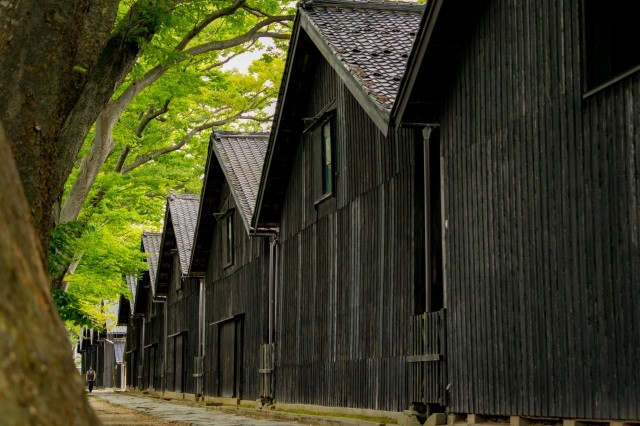
Built in 1893, the Sankyo Soko Storehouses continue to function today as rice storehouses. The impressive wisdom of the builders can be seen in such things as the double roof used for insulating heat and the row of Keyaki trees planted behind the storehouses to protect them from the afternoon sun and strong winds. Today the storehouses continue to protect the rice contained within them from heat and moisture using the same traditional methods.
The row of storehouses emanates a nostalgic atmosphere and maintains traces of the years when the area flourished as a port for rice shipments. The storehouses are a popular photography location as well as a favourite location for shooting movies and TV dramas. The storehouses gained fame after appearing in NHK’s popular TV drama series “Oshin”.
Standing beside the Mogami River the storehouses create fascinating views in combination with the port and small wooden rice-shipping boats. Their triangular roofs and white walls reflect serenely on the river water. On the other side of the storehouses is a parallel row of Keyaki trees which in combination with the stone pavements and the storehouses’ black wooden walls create more photogenic vistas! Visitors can enjoy pleasant scenes throughout the year including verdant greens of the Keyaki trees in summer, snow-capped triangular roofs in winter, illuminated storehouses at dusk and glittering stone pavements in the rain. The incredible views change depending on the season and time of day.
Regional products including tasty rice and local sake are available at the adjoining Sakata Yumenokura. The on-site restaurant offers dishes made with fresh seafood and harvests from the Shonai plains. The terrace seats are a lovely option to enjoy a drink and a meal on fine days.
A thematic journey in the Tohoku region:Okuno Hosomichi・The History of Michinoku
The row of storehouses emanates a nostalgic atmosphere and maintains traces of the years when the area flourished as a port for rice shipments. The storehouses are a popular photography location as well as a favourite location for shooting movies and TV dramas. The storehouses gained fame after appearing in NHK’s popular TV drama series “Oshin”.
Standing beside the Mogami River the storehouses create fascinating views in combination with the port and small wooden rice-shipping boats. Their triangular roofs and white walls reflect serenely on the river water. On the other side of the storehouses is a parallel row of Keyaki trees which in combination with the stone pavements and the storehouses’ black wooden walls create more photogenic vistas! Visitors can enjoy pleasant scenes throughout the year including verdant greens of the Keyaki trees in summer, snow-capped triangular roofs in winter, illuminated storehouses at dusk and glittering stone pavements in the rain. The incredible views change depending on the season and time of day.
Regional products including tasty rice and local sake are available at the adjoining Sakata Yumenokura. The on-site restaurant offers dishes made with fresh seafood and harvests from the Shonai plains. The terrace seats are a lovely option to enjoy a drink and a meal on fine days.
A thematic journey in the Tohoku region:Okuno Hosomichi・The History of Michinoku
Yunohama Onsen
Enjoy the stunning sunset view over the sea while relaxing in an open-air bath at this Onsen!
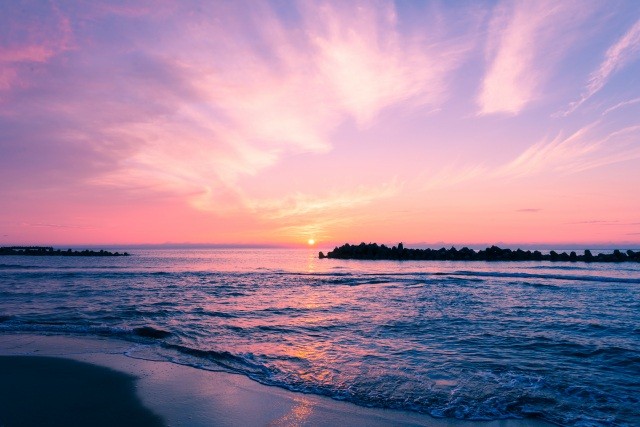
Yunohama Onsen offers luxurious hot spring experiences at hotels facing the Sea of Japan, the perfect location to enjoy a spectacular sunset view while taking a relaxing soak in an open-air bath. The view of the blazing sun setting over the Sea of Japan is awe-inspiring, colouring everything in an orange glow as the sun fades into the sea. Yunohama Onsen is located on the Yunohama Coast whose stunning sunset views have been officially recognised as one of Japan’s 100 most beautiful.
After an excellent hot spring experience, enjoy some of the local specialties made with seafood from the Sea of Japan and fresh vegetables from the rich Shonai plains including bamboo shoots, Dadacha (a type of Edamame) beans, melons and warm fish soup.
The Yunohama Coast is also said to be the birthplace of Japanese surfing. There is a record that local youths rode waves on boards during the Edo period (1603-1868). The vast and shallow stretch of beach is perfect for bathing and water sports.
The nearby Tsuruoka City Kamo Aquarium is nationally renowned for its incredible display of jellyfish. Come and enjoy an ideal coastal holiday!
After an excellent hot spring experience, enjoy some of the local specialties made with seafood from the Sea of Japan and fresh vegetables from the rich Shonai plains including bamboo shoots, Dadacha (a type of Edamame) beans, melons and warm fish soup.
The Yunohama Coast is also said to be the birthplace of Japanese surfing. There is a record that local youths rode waves on boards during the Edo period (1603-1868). The vast and shallow stretch of beach is perfect for bathing and water sports.
The nearby Tsuruoka City Kamo Aquarium is nationally renowned for its incredible display of jellyfish. Come and enjoy an ideal coastal holiday!
Day2
Mt. Haguro
The sacred mountain of cedar trees awarded three stars in the Michelin Green Guide
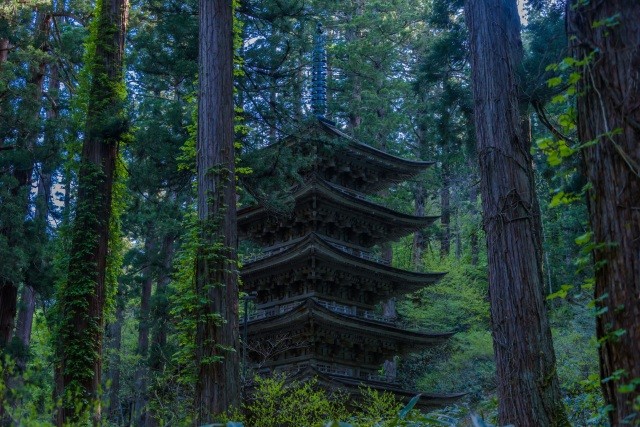
Mount Haguro, Mount Gassan and Mount Yudono, known as the Three Mountains of Dewa, have been revered as sacred mountains for hundreds of years. Travelling to these three mountains is said to be a journey of reincarnation as believers pray for the present on Mount Haguro, for the past on Mount Gassan and for the future on Mount Yudono. A popular proverb goes “a western pilgrimage to Ise Shrine and an eastern pilgrimage to the Three Mountains of Dewa”, and these mountains are a well-known destination for a once in a lifetime visit. The 1.7-kilometre walking route of Mount Haguro takes one hour from Zuishinmon Gate to Sanjingosaiden Shrine.
The row of cedar trees along the route from Zuishinmon Gate to the top of the mountain has been awarded three stars in the Michelin Green Guide. After crossing the vermillion Shinkyo Bridge a five-storey pagoda rises within the row of massive cedar trees, some of which are a thousand years old and known as “Jijisugi”. This is a popular location for photos as it combines two officially recognised sites – the pagoda, a national treasure, and the massive cedar trees, an official natural monument. The illuminated view of the pagoda surrounded by the cedar trees at night is fantastic during summer.
The following 2,446 stone steps up the mountain are a challenge that is well-rewarded. Look out for the 33 carved pictures of the three slopes on the steps, spot them all and your wish will come true! At the end of the second slope, the Ninosaka Chaya teahouse is the perfect place for a refreshment with the famous Chikara-mochi (‘great strength’ rice cakes) while enjoying the splendid view of the Shonai plains. Continuing up the third slope to the red gateway, the goal is a visit to Sanjingosaiden Shrine enshrining gods of the three mountains of Dewa. The magnificent views from the top of the mountain, not to mention the sense of achievement, are well worth the effort!
A thematic journey in the Tohoku region:Nature・Spectacles
The row of cedar trees along the route from Zuishinmon Gate to the top of the mountain has been awarded three stars in the Michelin Green Guide. After crossing the vermillion Shinkyo Bridge a five-storey pagoda rises within the row of massive cedar trees, some of which are a thousand years old and known as “Jijisugi”. This is a popular location for photos as it combines two officially recognised sites – the pagoda, a national treasure, and the massive cedar trees, an official natural monument. The illuminated view of the pagoda surrounded by the cedar trees at night is fantastic during summer.
The following 2,446 stone steps up the mountain are a challenge that is well-rewarded. Look out for the 33 carved pictures of the three slopes on the steps, spot them all and your wish will come true! At the end of the second slope, the Ninosaka Chaya teahouse is the perfect place for a refreshment with the famous Chikara-mochi (‘great strength’ rice cakes) while enjoying the splendid view of the Shonai plains. Continuing up the third slope to the red gateway, the goal is a visit to Sanjingosaiden Shrine enshrining gods of the three mountains of Dewa. The magnificent views from the top of the mountain, not to mention the sense of achievement, are well worth the effort!
A thematic journey in the Tohoku region:Nature・Spectacles
Salmon Salting Experience
Creating a depth of flavour just with autumn salmon, salt, and the power of nature!
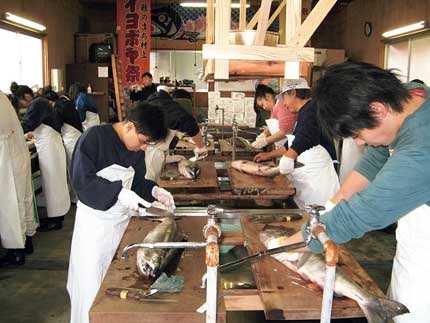
Murakami City has a long history with salmon, so much so that it is said that the city has more than 100 different ways to cook and prepare the fish. Among these methods is salted salmon, the ultimate natural food that is created simply from autumn salmon and salt. Salt is massaged thoroughly and evenly all over the fish and it is then matured through exposure to the low temperature and high humidity of the winter season, creating a delicious dish with super-concentrated umami flavours.So where can you take up the challenge of salting your own salmon? The answer is at the “Echigo-Murakami Sannomaruryu Sake-shiobiki Dojo,” at Iyoboya Kaikan. Every year, from the end of November to mid-December salmon salting events are held, which are extremely popular. Every year the master salters patiently and carefully show people how to salt a salmon.The actual salting experience takes two hours and afterwards you can take home the salmon that you have salted in a Styrofoam box. It is ready for eating after the salt has been washed away and it has been dried. There’s no doubting that your own personally salted salmon will have a unique and wonderful flavour.
Niigata Local Sake PREMIUM SAKE Kura
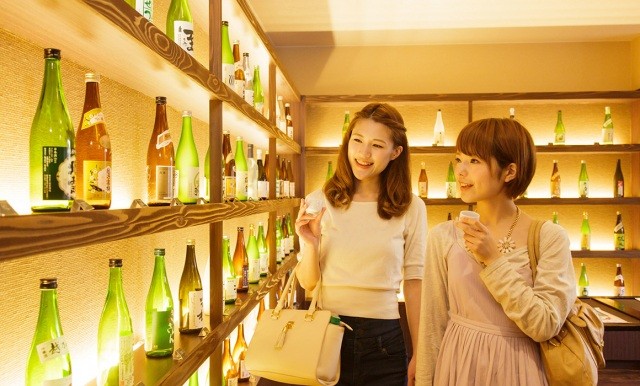
Niigata Prefecture is a "sake powerhouse" with the largest number of sake breweries in Japan. At Kura, you can enjoy carefully selected sake from all of these breweries.
You can freely choose your favorite brand and compare three cups of sake for 600 yen including tax. It is hard to decide which one to choose, but you can refer to the "sweet" or "dry" taste guidelines attached to each sake, or you can choose the label that you like best.
When you try the sake, you will be surprised to find that each sake is a confident product of the respective brewery. They are so delicious that you may end up drinking too much. If you find your favorite sake, you can purchase it on the spot.
You can freely choose your favorite brand and compare three cups of sake for 600 yen including tax. It is hard to decide which one to choose, but you can refer to the "sweet" or "dry" taste guidelines attached to each sake, or you can choose the label that you like best.
When you try the sake, you will be surprised to find that each sake is a confident product of the respective brewery. They are so delicious that you may end up drinking too much. If you find your favorite sake, you can purchase it on the spot.
Tsukioka Onsen
A popular hot spring for women promoting beautiful skin
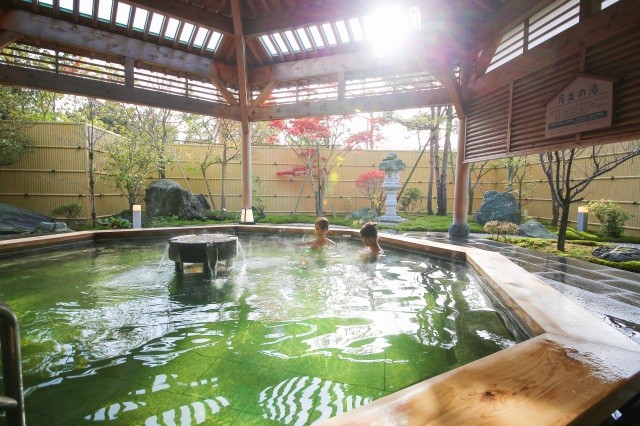
Tsukioka Onsen is famed for its rich sulphuric water with one of the highest sulphur contents of any Onsen in Japan. With exceptionally beautiful emerald green water this hot spring is particularly popular with women as the water is known to promote beautiful skin. The mild alkaline water is smooth on the skin leaving it soft and moist.
During an evening stroll around this hot spring town you will notice the scent of sulphur in the air and may catch a glimpse of a Kimono-clad Geisha dashing under the light of the street lamps. Enjoy a stay at one of the town’s traditional Ryokans (traditional Japanese inns) to really soak up the historic atmosphere.
The town’s charming streets are lined with a variety of traditional shops. Sample a cup of the local Sake, look in on the traditional sweets shops or even try your hand at baking and decorating your own rice crackers. The town also offers unique experiences such as soaking your hands in a special hot spring hand bath, tasting the sulphuric hot spring water or pouring it over the local matchmaking statue to wish for luck in love. Make the most of your Onsen experience with the Yumeguri Tegata Onsen Pass!
During an evening stroll around this hot spring town you will notice the scent of sulphur in the air and may catch a glimpse of a Kimono-clad Geisha dashing under the light of the street lamps. Enjoy a stay at one of the town’s traditional Ryokans (traditional Japanese inns) to really soak up the historic atmosphere.
The town’s charming streets are lined with a variety of traditional shops. Sample a cup of the local Sake, look in on the traditional sweets shops or even try your hand at baking and decorating your own rice crackers. The town also offers unique experiences such as soaking your hands in a special hot spring hand bath, tasting the sulphuric hot spring water or pouring it over the local matchmaking statue to wish for luck in love. Make the most of your Onsen experience with the Yumeguri Tegata Onsen Pass!
Day3
Hakusan Park
The iconic park of Niigata, the city of clear water
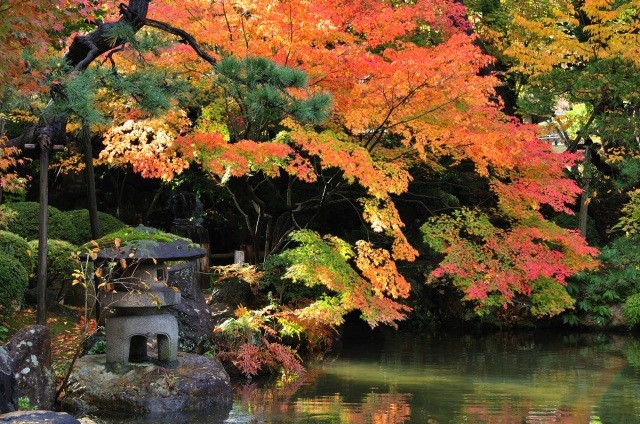
Hakusan Park is a Dutch-style promenade garden neighbouring Hakusan Shrine. This beautiful garden with ponds, artificial hills, trees and flowers has been selected as one of Japan’s best 100 city parks. Visitors can enjoy the garden’s seasonal beauty with its springtime cherry blossoms and summer lotus flowers, autumn leaves and snowy winter scenes.
The Air Gardens, located between the Hakusan Park and the Ryutopia (Niigata City Performing Arts Centre), is designed to represent islands in the water. It is a popular cherry blossom viewing location. When the cherry blossoms are at their best, the illuminated gardens are utterly fantastic. The Air Garden is also a popular spot for families with its children’s playgrounds.
The Enkikan, a former merchant house of the Meiji period partly relocated and reconstructed, has been turned into be a community space for learning traditional cultural activities such as tea ceremony. The building is open to the public and visitors can enjoy a cup of matcha tea (300 yen). The stunning lotus pond is definitely worth a visit!
The Air Gardens, located between the Hakusan Park and the Ryutopia (Niigata City Performing Arts Centre), is designed to represent islands in the water. It is a popular cherry blossom viewing location. When the cherry blossoms are at their best, the illuminated gardens are utterly fantastic. The Air Garden is also a popular spot for families with its children’s playgrounds.
The Enkikan, a former merchant house of the Meiji period partly relocated and reconstructed, has been turned into be a community space for learning traditional cultural activities such as tea ceremony. The building is open to the public and visitors can enjoy a cup of matcha tea (300 yen). The stunning lotus pond is definitely worth a visit!
Yahiko Shrine
The most famous sacred site in Niigata
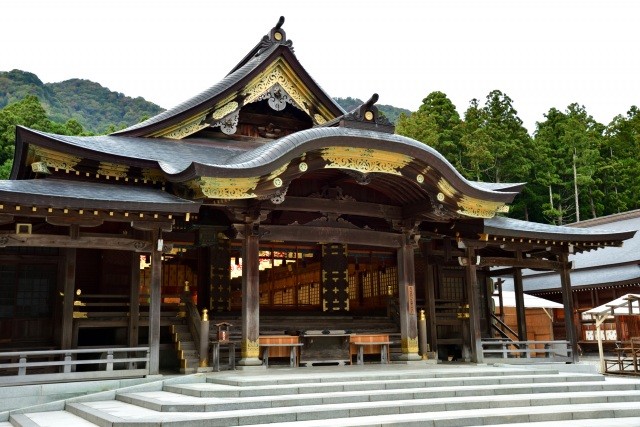
With a history stretching back 2,400 years, the Yahiko Shrine has been worshipped since ancient times. During the New Year celebrations a quarter of a million visitors come here to pray for good fortune and health for the coming year.
A 10-minute walk from JR Yahiko station takes you to the grove of Yahiko Shrine. As the shrine is popular for its sacred energy and exhilarating scenery, an early morning visit is recommended to fully appreciate its spiritual energy.
There is a unique stone known as a fortune-teller on site. Lift the stone while making a wish and if you feel the stone is light, your wish will come true. If the stone feels heavy however, your wish may not come true. Try it out on your visit for a unique experience!
A further 10-minute walk from the main shrine takes you to the base station of the Yahikoyama Ropeway. Take the ropeway up to the top station to visit Okusha – part of the shrine complex – from which a spectacular view of the surrounding countryside can be enjoyed.
A 10-minute walk from JR Yahiko station takes you to the grove of Yahiko Shrine. As the shrine is popular for its sacred energy and exhilarating scenery, an early morning visit is recommended to fully appreciate its spiritual energy.
There is a unique stone known as a fortune-teller on site. Lift the stone while making a wish and if you feel the stone is light, your wish will come true. If the stone feels heavy however, your wish may not come true. Try it out on your visit for a unique experience!
A further 10-minute walk from the main shrine takes you to the base station of the Yahikoyama Ropeway. Take the ropeway up to the top station to visit Okusha – part of the shrine complex – from which a spectacular view of the surrounding countryside can be enjoyed.
Create hammered patterns on a copper beer cup
Come and enjoy metal crafts in Tsubame, a city with a 400-year history in metalworking. Get hands-on craftsmanship experience! Find perfect gifts to bring back from your trip.
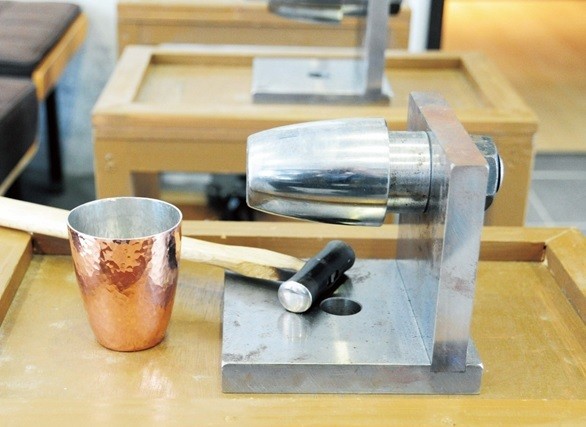
Tsuiki (hammered) copperware, one of Tsubame City’s traditional metalworking products, is made by hammering a single copper plate with a hammer and raising the edges. At the Tsubame Industrial Materials Museum, you can learn about the copperware production process, and also try creating hammered patterns, one of the steps of making tsuiki copperware.Make your own original beer cup or sake cup by hammering the surface with a hammer to create a hammered pattern. The hammered pattern makes the inside of the beer cup uneven, which leads to better foam and creamy beer! A full range of other hands-on activities are also available.
Niigata Station, Tsubame-Sanjo Station, Niigata Airport
GOAL
